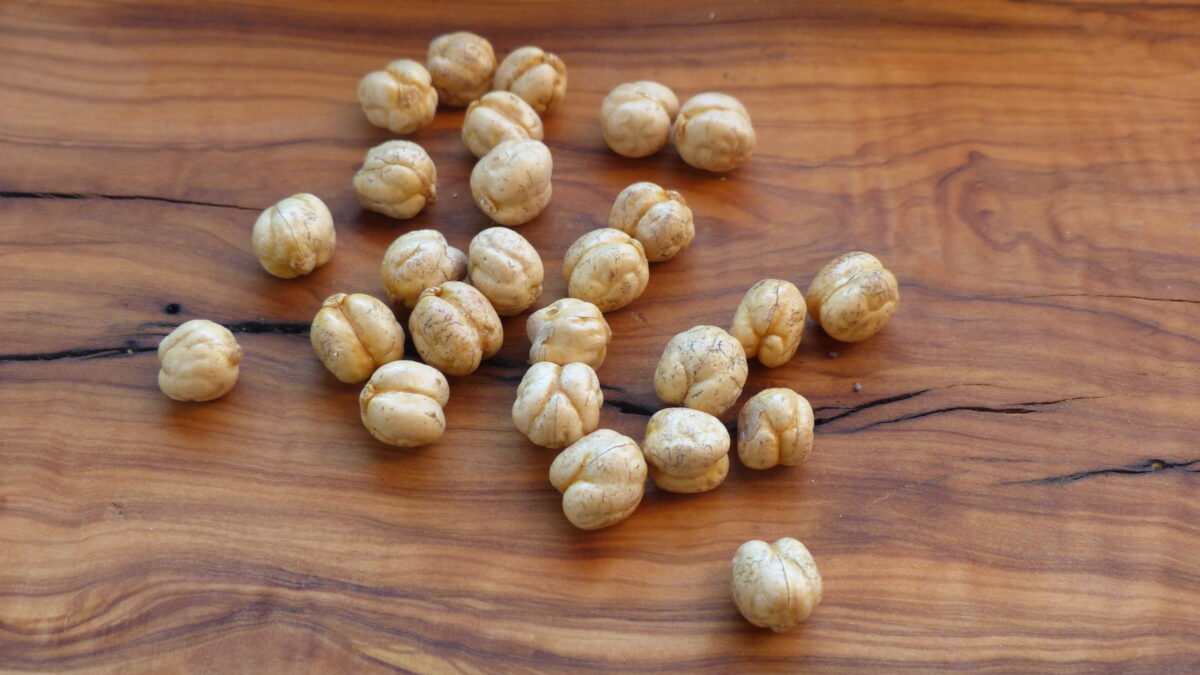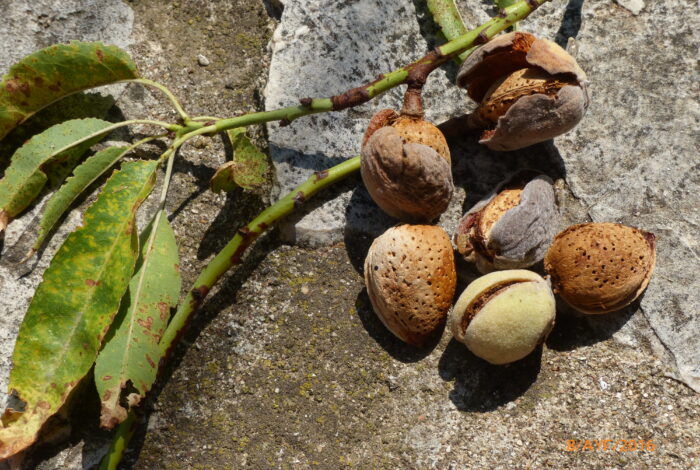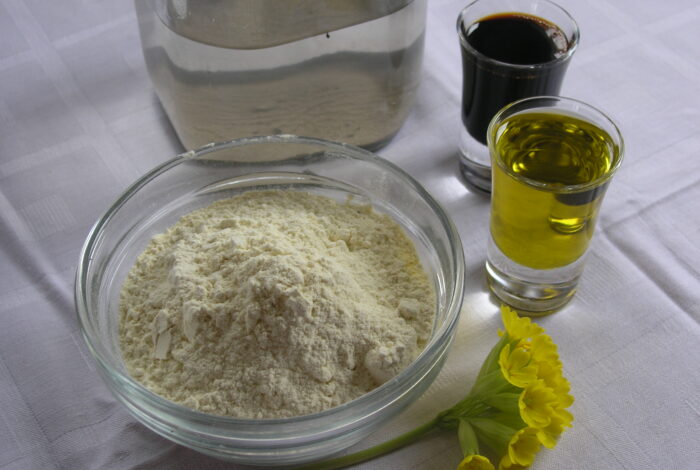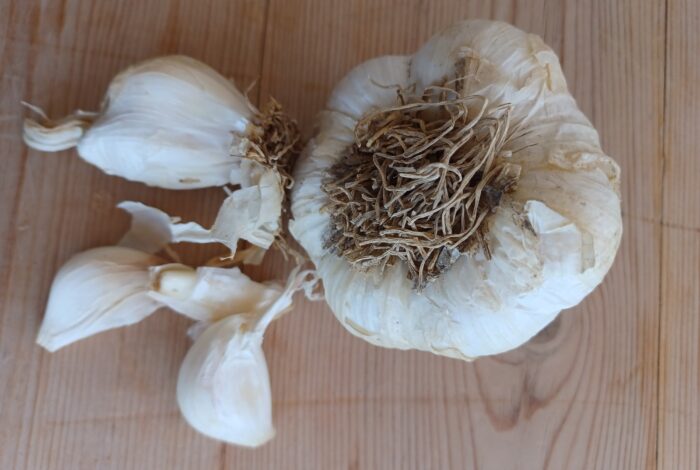Soultana-Maria Valamoti
The earliest chickpeas used as food by prehistoric humans have been found in northwestern Syria and date back 10,000 years. However, in Greece, chickpeas do not appear to have been a staple in the diet of prehistoric populations, as there are very few charred chickpea seed remains from Neolithic and Bronze Age sites. It is possible that this legume was either not palatable or did not easily adapt to the new environmental conditions of southeastern Europe for a long period after the introduction of agriculture. In historical times, chickpeas begin to appear more prominently in the archaeobotanical record, such as in a concentration of charred remains found on the Acropolis of Vergina (2nd–1st century BC).
In contrast to their near absence in the prehistoric record, chickpeas – known in antiquity as erevinthos – are frequently mentioned in ancient Greek texts from very early on. They appear as early as the 8th century BC in Homer’s epics, where they are mentioned alongside broad beans in a simile. The poet Sappho (7th–6th century BC) speaks of the “golden chickpea,” and the poet-philosopher Xenophanes (6th–5th century BC) depicts someone drinking sweet wine by the fire while eating chickpeas. Ancient comedy often refers to chickpeas, suggesting that they were a common food and one associated with poverty, as for example in Ecclesiazusae by Aristophanes (5th–4th century BC). Chickpeas were eaten as a snack (tragimata) with wine when still green and tender, or roasted or boiled when mature, as noted by Phainias (4th century BC). Archestratus (4th century BC) does not seem to have held them in high regard as an ingredient.
In the Hippocratic texts (5th–4th century BC), chickpeas are more positively viewed: they are considered diuretic, purgative, and nourishing. White chickpeas, in particular, are mentioned as suitable ingredients in specific medicinal preparations. According to Theophrastus (4th–3rd century BC), there was considerable diversity in chickpea types during antiquity: some were large and called kriaria, others were tiny, like rovi, and others fell somewhere in between. He notes that the white ones were tastier than the black or red ones – indicating a wealth of chickpea varieties in antiquity, each suited for different uses.
Today, chickpeas remain a beloved dish in Greek cuisine.
In certain religious feasts (e.g., on Sifnos and Amorgos), chickpeas are slow-cooked and served to all the pilgrims in attendance. Ancient practices like eating roasted chickpeas as snacks persist in the form of modern stragalia, while in rural areas, those who cultivate them still enjoy the sweet, green chickpeas fresh from the field – just as people did in the 4th century BC.
Image 1. Charred chickpea seed from the Acropolis of Vergina, 2nd–1st century BC. (Photo by S.M. Valamoti, from the book Valamoti, Fyntikoglou, Symponis 2022, Food Crops in Ancient Greek Cuisine: an Archaeobotanical and Textual Study, University Studio Press.)
Image 2. Stragalia, roasted chickpeas. (Photo by S.M. Valamoti, from the book Valamoti, Fyntikoglou, Symponis 2022, Food Crops in Ancient Greek Cuisine: an Archaeobotanical and Textual Study, University Studio Press.)










